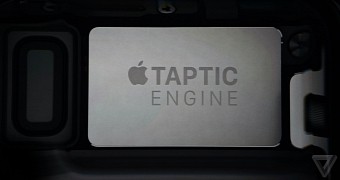I used to be a patent nerd. Just by reading the filings for the United States Patent and Trademark Office, you can somewhat realize what's in store for next-generation Apple devices.
The Cupertino, California-based tech giant does not always release the new stuff right away. Sometimes you see the second or third iteration of a technology filed as a patent before you can recognize it in a device. However, when Apple adds something new to their hardware, you can be sure of two things:
1. It is the best thing some could have done in that field and 2. This is not the last time you have seen that technology in a device.
Giving stuff away for free
Let's talk USB Type-C. We've seen reversible USB ports last year in Apple's filings with the USPTO. All summer long Mac and iPhone tech blogs were talking about the new iPhone 6 and 6 Plus coming with a Lightning to reversible USB connector cable. It didn't happen. Not because Apple was not ready to release something like that, but because they were working on something even bigger. Actually, something much smaller in size.
It has been rumored that the new USB Type-C connector has been created by Apple and they've given away the standard to the USB committee just to make sure as many manufacturers will adopt it. This is not how Apple used to do business, but things have changed.
Let's talk Research Kit. When was the list time a computer manufacturer had a breakthrough in medical research? Sure enough, heart beat or blood glucose sensors are great, but they do not serve a greater purpose, the way Research Kit does. These are technologies that are integrated in an iPhone and will probably come to the second- or third-generation Apple Watch.
Apple helps diagnose medical issues like Asthma, Parkinson's Disease, Diabetes, Breast Cancer and Cardiovascular Disease and a device as common as the iPhone can interpret that data and send it over to Medical Colleges that are working for a cure.
USB Type-C may become a universal standard next year if other manufacturers are smart to see its importance. Google already did with their new high-end Chrome laptop. ResearchKit will probably not be copied by Google or Samsung because this is work being done by Apple over 3 years and it's not like they can do that in 6 months.
But the fact that Apple is giving this away for free makes the case for a new Apple, a company that doesn't care if others are copying their stuff, but gives it away for free, just because they can.
The Apple Watch as a test device
The Apple Watch is the first new category of devices coming from Cupertino headquarters after Steve Jobs passed away. Apple has integrated some new technologies in the small device. The taptic engine is one of those. We've seen it in the Watch and the new trackpad in the MacBook.
We know it has been in development for over three years so all of those little things that came along with it are integrated in new devices from other categories. Having a smaller, more dense logic board a taptic multi-touch trackpad in a MacBook shows only one thing: the new Apple will not wait for new technologies to settle before they use them in other devices.
The next-generation iPhone
So now we're going back full circle. Apple will not only publish patents, but they will create new stuff, test it on hardware and include it in the next devices.
The iPhone 6s, or whatever the next generation will be called, may be the first to lose the physical Home Button. The taptic engine used in the Apple Watch and the MacBook will replace the need for a button that will recess into the device so the iPhone can be thinner.
Sure enough, thinner means the batter will be smaller and the camera will stay recessed. Looking at the way the layered battery fits in the new MacBook, we can cross this problem off the list. Maybe Apple has found a way to extend the battery to the rounded edges of the device and give the iPhone some more juice that way.
A taptic feedback home button will also bring some new possibilities on waterproofing the device. But the most important way Apple can use this is to give the user small vibrations when the virtual keys are pressed. This will break the barrier between the Blackberry-type devices and the touch screen only hardware. You could be taping on an icon or a button and feel something different depending on how long the screen is pressed.
The USB Type-C connector is larger than the Lightning port, but it may replace it soon enough. The reason behind that is the fact that USB Type-C can carry video and audio so Apple may get rid of the old 1/8 jack for headphones. Not sure if this is the best idea, though...
Having the same connector means you could be charging the iPhone with the same cable as the computer or you could borrow one from a Chrome laptop user.
I just hope the next-generation iPhone will come in an iPhone 5s screen size so we can all agree it is the perfect device.

 14 DAY TRIAL //
14 DAY TRIAL //